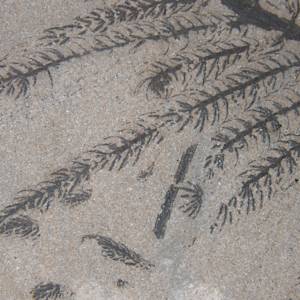4th Mass Extinction, End Triassic
201 million BCE • Earth
“Almost a quarter-billion years ago, rains soaked the arid wastes of the supercontinent Pangaea for more than a million years. When the floodwaters retreated, a new world was born... the near-eternal age of the dinosaurs. The crisis started with a familiar culprit..., gigantic pulses of carbon dioxide erupted into the atmosphere from volcanoes at the bottom of the ocean... This earthly belch of CO2 drove intense bouts of global warming, ocean acidification, mass extinction, and, most notably, a barrage of extreme rainfall and mountain-flattening mega-monsoons still visible in rocks around the world... A menagerie of lumbering beasts... like rhynchosaurs and dicynodonts, was all but exterminated; while in the ocean the disaster is marked by a massacre of reefs, sea lilies, shelled octopus relatives, and a sinuous group of marine reptiles called thalattosaurs... Oxygen isotopes from the fossil teeth of tiny sea creatures reveal that the entire episode was kicked off by warming of only about 4–7 degrees Celsius—roughly the same magnitude predicted for our own world under a business-as-usual carbon-emissions scenario.”
Source: “A Climate Catastrophe Paved the Way for the Dinosaurs’ Reign” Peter Brannan, The Atlantic, 10/22/2018.
Image Source: Barracudasauroides panxianensis (a small marine reptile from mid triasic). Didier Descouens via wikimedia commons. CC4.0


Learn about Maya Lin’s fifth and final memorial: a multi-platform science based artwork that presents an ecological history of our world - past, present, and future.

Discover ecological histories and stories of former abundance, loss, and recovery on the map of memory.

Learn how we can reduce our emissions and protect and restore species and habitats – around the world.

See how art can help us rethink the problems we face, and give us hope that each one of us can make a difference.

Help make a global memorial something personal and close to home. Share your stories of the natural world.


